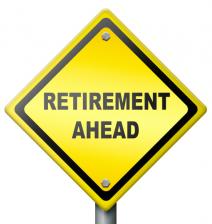10 Costly Retirement Account Mistakes (Part 2)
Money Girl explains how to steer clear of 5 costly 401(k) mistakes that could hurt your personal finances.
Laura Adams, MBA
Listen
10 Costly Retirement Account Mistakes (Part 2)
This is the second episode in a 2-part series about how to make the most of your retirement account and avoid costly mistakes that end up hurting your finances.
In Part 1 of this series, you learned the basics of traditional and Roth IRAs and 5 common missteps people often make. Now we’ll cover how to steer clear of 5 more mistakes that you might make with a workplace retirement account, like a 401(k) or a 403(b).
.
Click here to subscribe to the weekly Money Girl audio podcast—it’s FREE!
What Is a Workplace Retirement Account?
If your employer offers a retirement plan, never take it for granted. It’s a really valuable benefit that allows you to save for retirement and reduce your taxes at the same time.

You’ve probably heard of a 401(k), which is the most popular type of employer-sponsored retirement plan. Its sister account, the 403(b), is offered by many non-profit organizations–such as schools, churches, and hospitals–and is similar in most ways.
For 2014, you can contribute up to $17,500 or $23,000 if you’re age 50 or older, to a 401(k) or 403(b). Your contributions aren’t subject to income tax until you make withdrawals in retirement. However, payroll deductions for Social Security and Medicare still apply.
Taking early withdrawals from any type of retirement account is expensive. So never contribute money that you might need before the official retirement age of 59½.
Some retirement plans allow “hardship distributions” for certain qualifying events, such as avoiding foreclosure, paying for college, or paying funeral expenses. But even those distributions are subject to a 10% early withdrawal penalty, plus ordinary income tax.
In addition to sheltering your money from taxation, workplace plans are protected from creditors if you, or your employer, declare bankruptcy.
See also: 10 Things You Should Know About 401(k) Retirement Plans
Now that we’ve hit the highlights of workplace retirement accounts, here are 5 costly mistakes to avoid:
Mistake #1: Sticking with a Default Contribution Amount
Many employer-sponsored retirement plans automatically enroll employees and withhold a default contribution amount from their paychecks, unless they opt out. Studies have shown that signing people up this way gets more people to participate and save for retirement.
However, the downside of automatic enrollment is that many people save less than if they had signed up and chosen a retirement contribution amount on their own. This is because the default contribution level is typically very low, such as 2% of income.
While saving 2% for the future is certainly better than zero, don’t assume that your retirement plan’s default savings rate is high enough. Everyone should be saving at least 10% to 15% of gross income to pay for a comfortable retirement.
Additionally, sticking with the default contribution rate may be too little to max out matching funds that an employer may offer, which brings us to the next mistake…
While saving 2% for the future is certainly better than zero, don’t assume that your retirement plan’s default savings rate is high enough.
Mistake #2: Not Maxing Out a Match
Imagine this: Your employer wants to give you a raise, asks for nothing in return, and you turn it down. Not likely, right? Well, that’s exactly what’s happening if you don’t take advantage of employer matching.
Let’s say you earn $50,000 a year and get a 3% 401(k) or 403(b) match. If you contribute $1,500 a year or $125 a month, your employer will also contribute $125 a month. That’s an impressive 100% return on your money even if you have no investment growth!
Your retirement plan may require you to be enrolled for a certain period of time before you own all of the matched contributions and growth, which is known as vesting. If you leave the company before you’re fully vested, you may not receive the entire company match. However, you’re always 100% vested in the contributions that you make from your paycheck.
See also: Does the 401(k) Contribution Limit Include Employer Matching?
Mistake #3: Ignoring the Roth Option
In Part 1 of this series, I covered the Roth IRA. Did you know that many workplace retirement plans also have a Roth option?
Just like with a Roth IRA, you fund a Roth 401(k) or 403(b) with after-tax money. When you make withdrawals after age 59½, neither your contributions nor earnings are subject to tax. But unlike a Roth IRA, which isn’t available to high earners, a Roth 401(k) or 403(b) is available to all plan participants because threre are no income limits.
Your decision to take advantage of a Roth retirement account should include considerations about your current and future tax situation. For instance, if you believe there’s more benefit to paying tax on current-year contributions, instead of later on in retirement, you’re better off with a traditional retirement account. But if you believe that you’ll pay more tax in retirement than you do now, it makes sense to pay tax earlier rather than later with a Roth.
See also: What’s the Difference Between a Traditional and Roth 401(k)?
Mistake #4: Taking a Loan

If you don’t repay the loan on time, it’s considered an early withdrawal, subject to taxes and a 10% penalty. Additionally, if you leave your job or get fired, you typically have to repay the full loan amount with interest within 60 days—otherwise it’s considered an early withdrawal.
Another problem with cracking open your retirement nest egg is that the money you borrow is taken out of investments and can’t grow. That can really cost you over the long term.
If you’re having financial troubles, consider temporarily suspending your retirement contributions, finding an additional source of income, or negotiating payments with creditors, instead of borrowing from your retirement accounts.
As I previously mentioned, if you declare bankruptcy your workplace retirement account is generally protected from creditors. So never tap the account without first getting financial or legal advice.
See also: Should You Take a 401(k) Loan?
Mistake #5: Not Utilizing Free Advice
More employers are offering free or low-cost financial advice as a benefit through their retirement plan. But surveys show that few employees seek it.
In some cases, in-plan retirement guidance comes with an annual fee that could be up to 0.5% of the value of your retirement account. But this is still less than most fee-based financial advisors, who typically charge 1-3%.
If you’re getting close to retirement or have a complex situation, having a professional advisor is especially important. He or she can make sure you’re on track to accumulate enough money to reach your goals and retire comfortably.
An in-plan advisor can help you make decisions like whether to use a traditional or Roth account, which investments to choose, and whether to take a loan from your retirement plan. So find out how much they charge and compare it to the cost of advisors outside of your retirement plan.
I hope this series on retirement mistakes will help you avoid costly errors and stay on track with your contributions. If you have a retirement account question, be sure to send it to money@quickanddirtytips.comcreate new email“>money@quickanddirtytips.comcreate new email.
Get More Money Girl
There’s a huge archive of past articles and podcasts if you type in what you want to learn about in the search bar at the top of the page. Here are all the many places you can connect with me, learn more about personal finance, and ask your money question:
- Google+
- Money Girl podcast on iTunes (it’s free to subscribe!)
- Email:money@quickanddirtytips.comcreate new email“>money@quickanddirtytips.comcreate new email
Click here to sign up for the free Money Girl Newsletter!
Download FREE chapters of Money Girl’s Smart Moves to Grow Rich
To learn about how to get out of debt, save money, and build wealth, get a copy of my book Money Girl’s Smart Moves to Grow Rich. It tells you what you need to know about money without bogging you down with what you don’t. It’s available at your favorite book store in print or as an e-book for your Kindle, Nook, iPad, PC, Mac, or smart phone. You can even download 2 free book chapters at SmartMovesToGrowRich.com!
Betterment LLC is an SEC Registered Investment Advisor. Brokerage services are offered by Betterment Securities, an SEC registered broker-dealer and member FINRA/SIPC. Investments are not FDIC Insured. No Bank Guarantee. May Lose Value. Investing in securities involves risks, and there is always the potential of losing money when you invest in securities. Before investing, consider your investment objectives and Betterment’s charges and expenses. Not an offer, solicitation of an offer, or advice to buy or sell securities in jurisdictions where Betterment and Betterment Securities are not registered.

